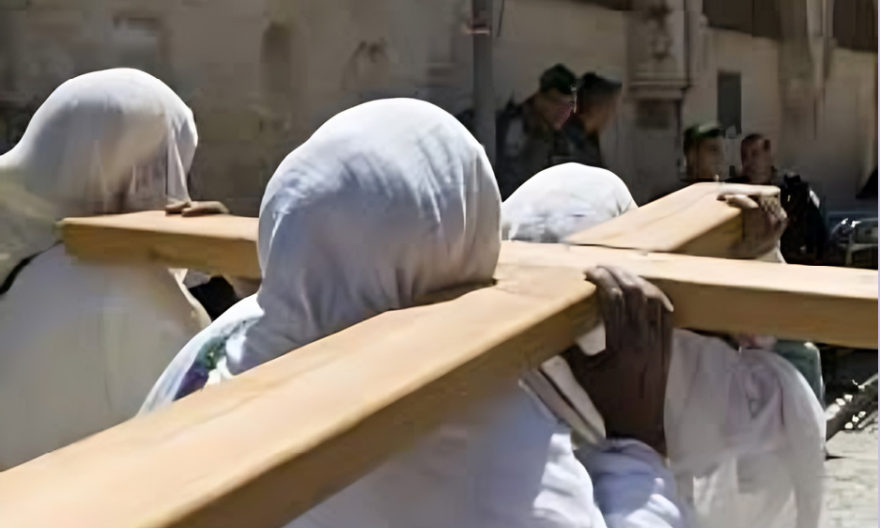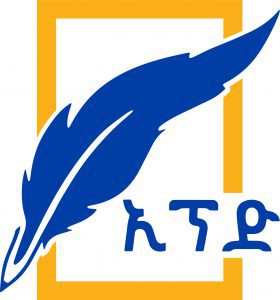
Every year, Ethiopian Easter, known as Fasika is celebrated with great enthusiasm and joy throughout the country by followers of Christianity, whether it is Orthodox Tewahedo , Catholic or Protestant communities. This festive occasion is a unique blend of deep religious significance, rich cultural traditions, and vibrant celebrations that bring people together in a spirit of unity and joy.
Ethiopian Easter or Fasika is the most important religious festival in the Ethiopian Christian calendar. It commemorates the resurrection of Jesus Christ from the dead, following his crucifixion on Good Friday. The holiday falls on a different date each year due to the use of the Julian calendar by the Ethiopian Orthodox Church, which is about seven to eight years behind the Gregorian calendar.
According to the Ethiopian Orthodox Tewahido Church (EOTC), the celebration of Ethiopian Easter begins with a period of fasting known as Hudadie, which lasts for more than 50 days. The 55 days of fasting symbolize the 40 days Jesus spent in the desert and the 15 days the apostles spent mourning His crucifixion. During this time, believers abstain from meat and dairy products and alcohol dedicating themselves to prayer, reflection and acts of repentance to prepare for the celebration of Christ’s resurrection.
Accordingly, the Ethiopian Easter is celebrated with a series of colorful and joyous ceremonies and traditions that reflect the rich culture and heritage of the Ethiopian people. On the eve of Easter Sunday, worshippers gather in churches for an all-night vigil with the Kebero and other ceremonial occasions. This service is accompanied by traditional hymns and prayers, creating a solemn and reverent atmosphere.
On Easter Sunday, the long fasting period of Lent comes to an end, and believers joyfully celebrate Fasika with a grand feast. Traditional Ethiopian dishes such as Doro Wot (a spicy chicken stew) and Injera (flatbread) prepared and families and friends come together to share meals, exchange gifts, and participate in the joyful festivities that reflect the spirit of renewal and togetherness. This joyful celebration is a highlight of the holiday and brings people together in a spirit of togetherness and commemorating God’s resurrection.
More importantly, Ethiopian Easter holds profound spiritual significance for the faithful followers of the Ethiopian Orthodox Church. It is a sacred time for reflection, repentance, and spiritual renewal, as believers commemorate the suffering, sacrifice, and resurrection of Jesus Christ. The holiday serves as a powerful reminder of the central values of faith, forgiveness, and love, encouraging the faithful to strengthen their spiritual lives and lead life in accordance with the teachings of Jesus Christ.
In addition to its deep religious significance, Ethiopian Easter is also a meaningful cultural celebration that brings communities together. It is an opportunity for Ethiopians to honor their shared heritage and long-standing traditions. The festival is a time that fosters a spirit of unity, joy, and togetherness, as people of all ages and backgrounds come together to take part to celebrate the festivities, and the warm hospitality that defines Ethiopian culture.
Last Sunday, Ethiopian Christians from various denominations united in spirit and devotion to celebrate Palm Sunday, locally known as ‘Hosanna’, with sacred rituals, heartfelt prayers, and communal gatherings, marking the beginning of the Holy Week.
The Ethiopian Orthodox Tewahedo Church held solemn and vibrant ceremonies to honor Jesus Christ’s triumphal entry into Jerusalem, a pivotal moment in the Christian calendar. Observed on the final Sunday of Lent, Palm Sunday symbolizes joy, reverence, and divine fulfillment, recalling the biblical scene where crowds welcomed Jesus Christ by laying palm branches in Jesus’s pathway in recognition that He is the long awaited Messiah.
In Ethiopia, Palm Sunday is celebrated with great enthusiasm and joy. The day begins with a church service, where priests and worshippers carry palm leaves and branches in a procession around the church. The palm branches are blessed by the priests and then distributed to the congregation. In Addis Ababa, the Day was also marked colorfully and impressively with various religious events. Ethiopian Orthodox faithful gathered before dawn at Menbere Tsabaot Holy Trinity Cathedral to mark the occasion. The ceremony, led by His Holiness Abune Mathias I, Patriarch of the Ethiopian Orthodox Tewahedo Church, featured traditional prayers, ancient hymns, and centuries-old liturgical rituals. The atmosphere was one of deep reverence and spiritual devotion, uniting worshippers in a powerful expression of faith. In the same way and at the same time, led by His Eminence Cardinal Berhaneyesus Surafel and joined by clergy and a large devout congregation, the Ethiopian Catholic Church also marked the Day with grandeur at the Nativity Cathedral.
Yesterday, Ethiopian Christians followers of the Ethiopian Orthodox Tewahdo and Catholic churches marked the Holy Thursday; attending church prayers and other religious services dedicated to the Holy Thursday which commemorates Jesus Christ’s Last Supper with his disciples and the washing of disciples’ feet to teach humility and service.
Today, Ethiopian Christians are solemnly observing Good Friday, locally known as ‘Sekelet’, a deeply significant part of the Passion Week. This Day commemorates the crucifixion of Jesus Christ and is marked by mourning, reflection and spiritual devotion, remembering the immense suffering and sacrifice Jesus endured on the cross for the salvation of humanity. Across the country, Christian believers, gathering in their respective churches are attending special church services from morning until evening and are participating in processions that reenact the crucifixion. As a day of mourning, Sekelet is marked by fasting, prayer, and deep contemplation of the sacrifice made by Jesus, honoring the immense suffering He bore for the salvation of humanity.
The churches hold symbolic processions reenacting the events of the crucifixion, allowing the faithful to vividly connect with the Passion narrative. For many, Sekelet offers a moment to renew faith and embrace the core Christian values of sacrifice, forgiveness, and salvation. Fasting is a central element of the observance, with many abstaining from food and drink from morning until evening, as an expression of mourning and spiritual discipline. The day offers Ethiopian Christians a profound opportunity to reflect on the meaning of Christ’s suffering and to renew their commitment to their faith through fasting, prayer, contemplation, confessions, prostrations and acts of devotion.
Ethiopian Easter or Tinsae, marks the joyful culmination of the Holy Week, celebrating the resurrection of Jesus Christ. The day begins with early morning church services filled with hymns, prayers, and sermons. Worshippers, dressed in their finest traditional attire and carrying woven palm leaves, gather to rejoice. After the service, families unite for a festive Easter feast, while streets come alive with singing, dancing, and a shared spirit of renewal and celebration.
BY TEWODROS KASSA
THE ETHIOPIAN HERALD FRIDAY 18 APRIL 2025





